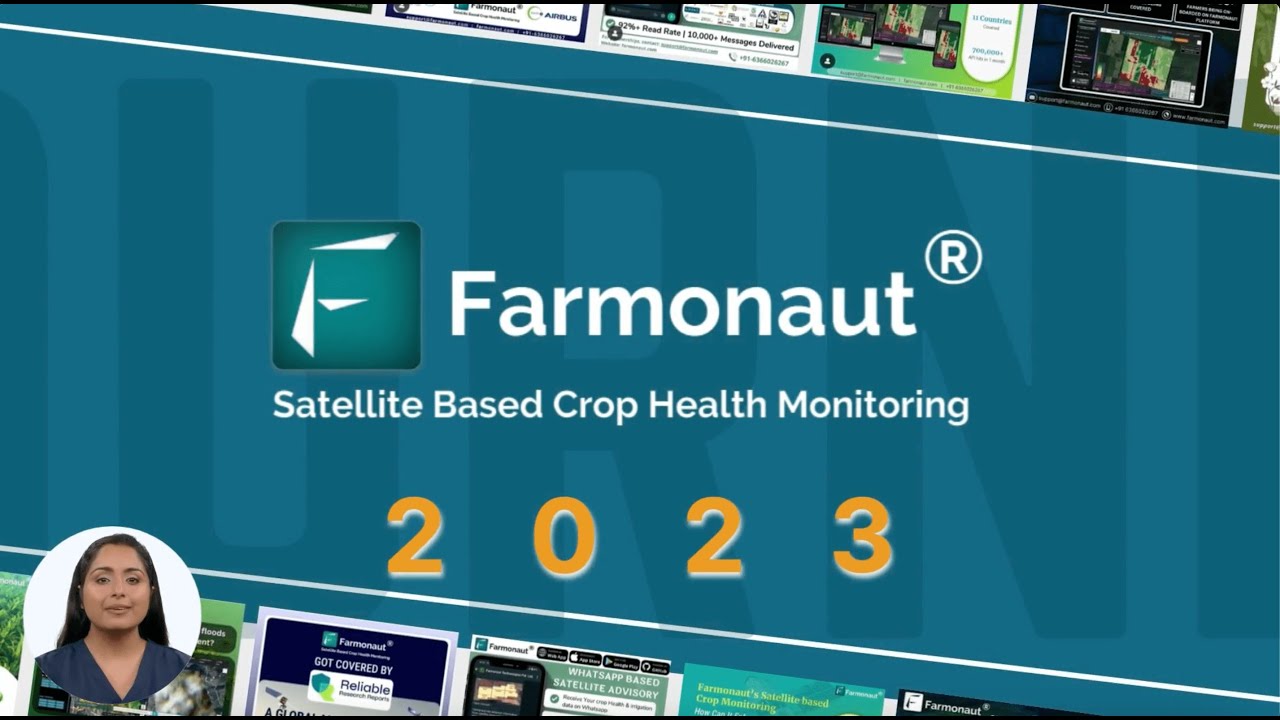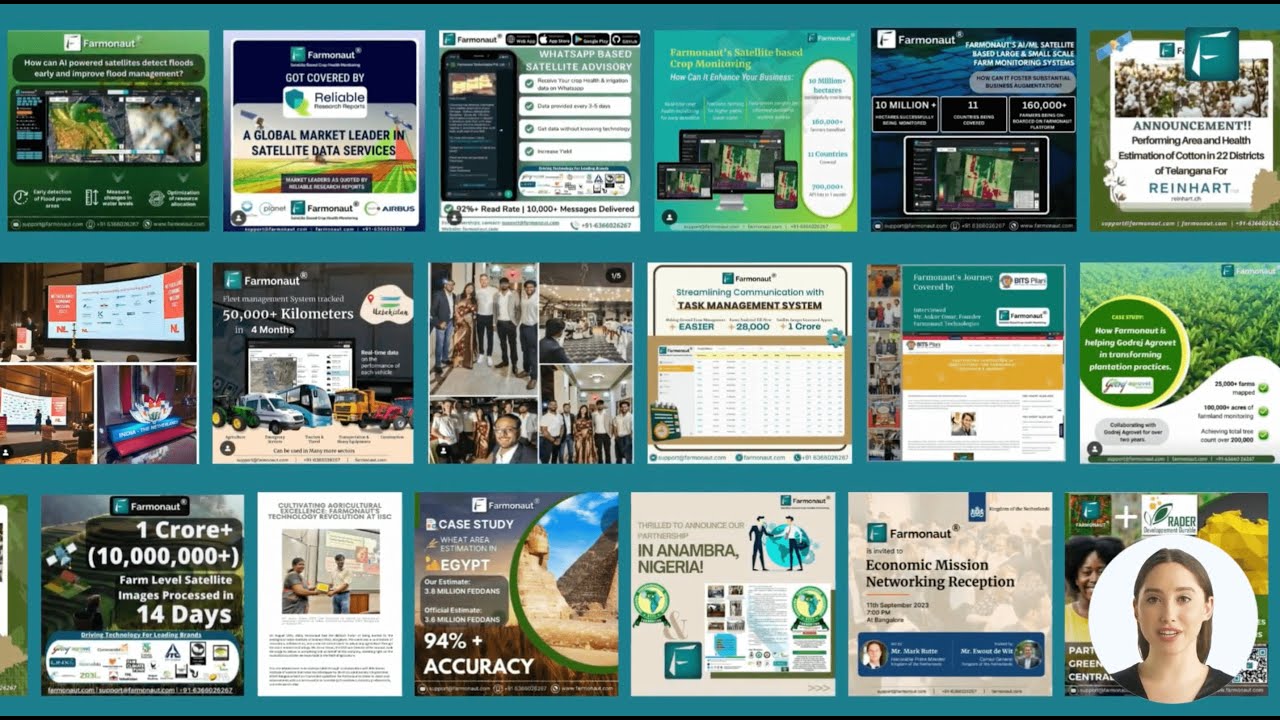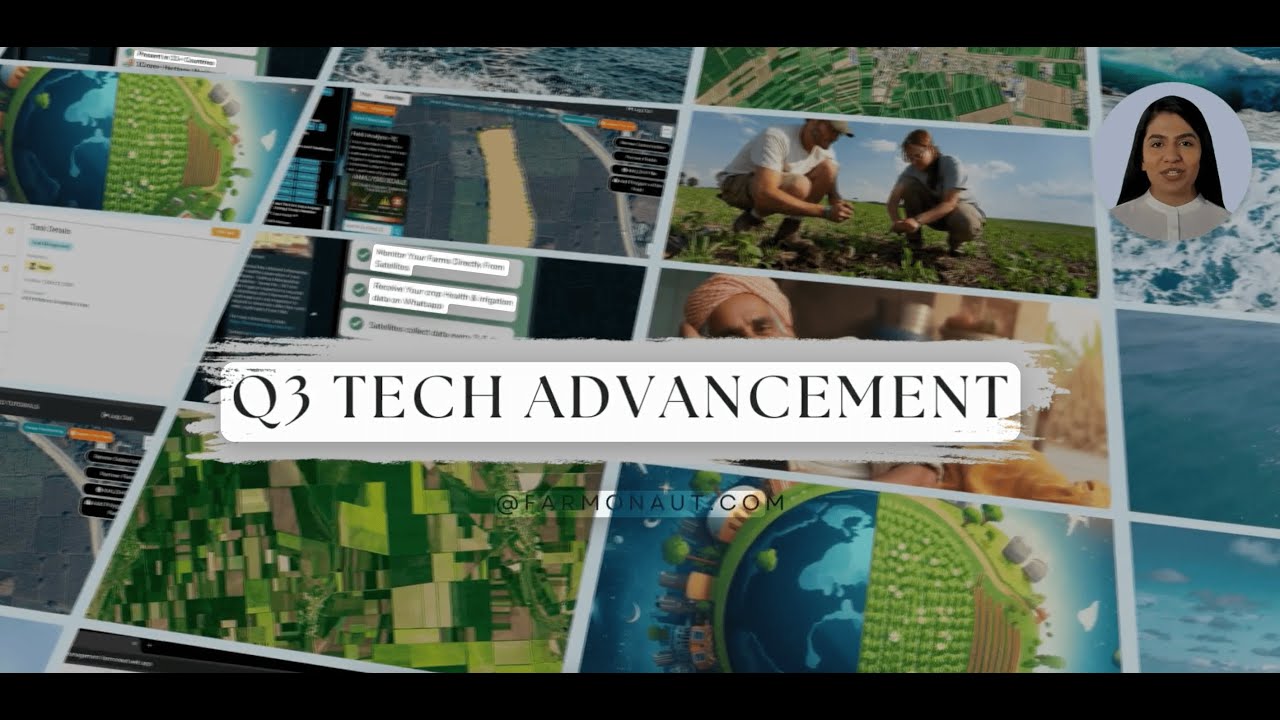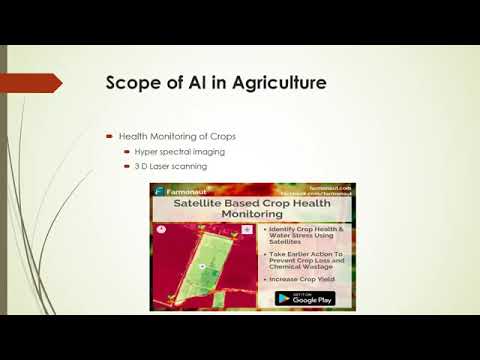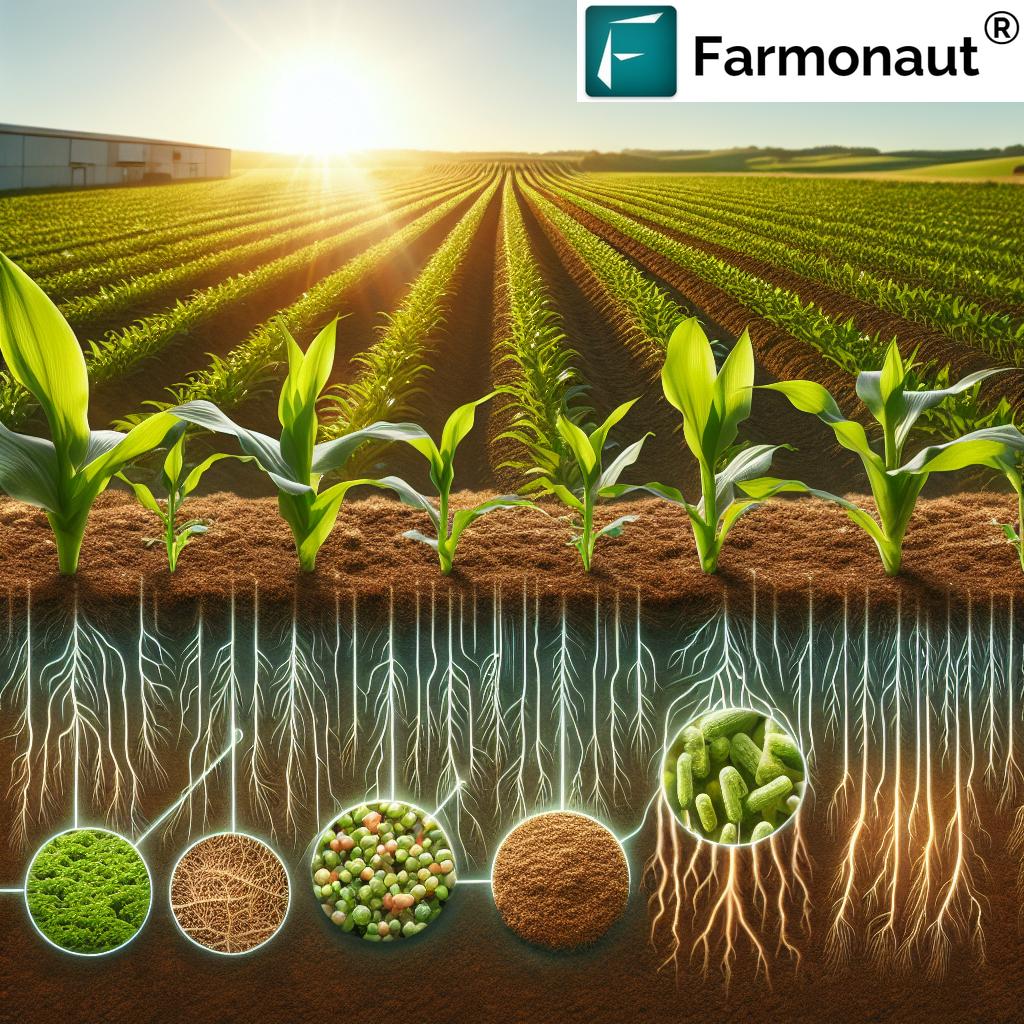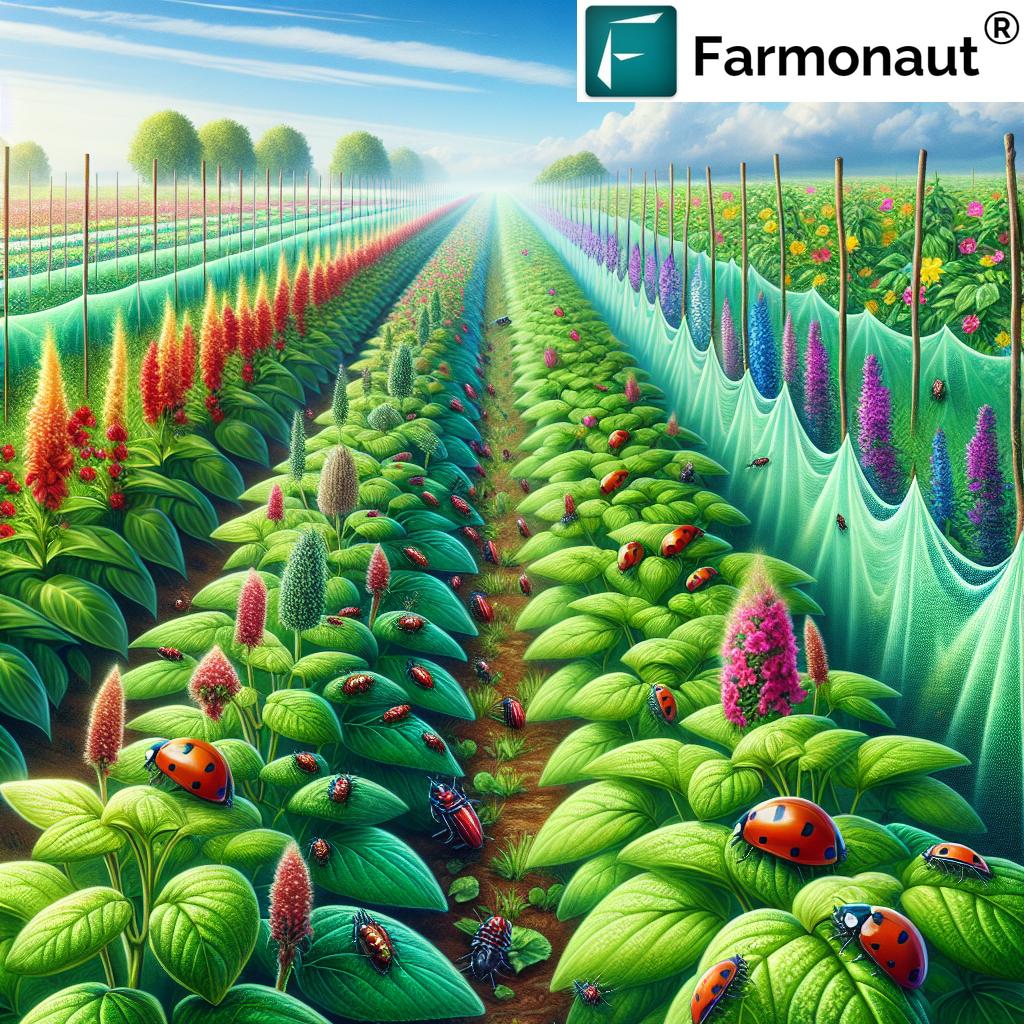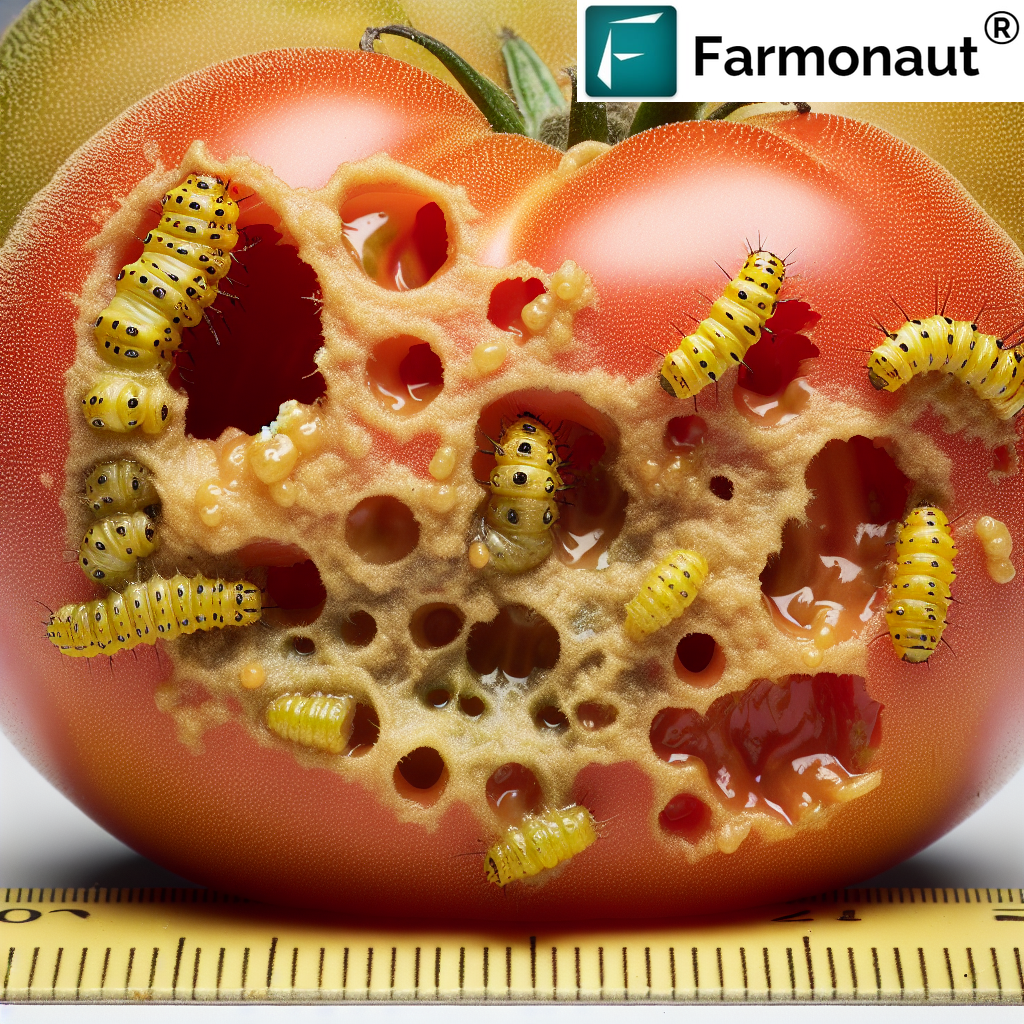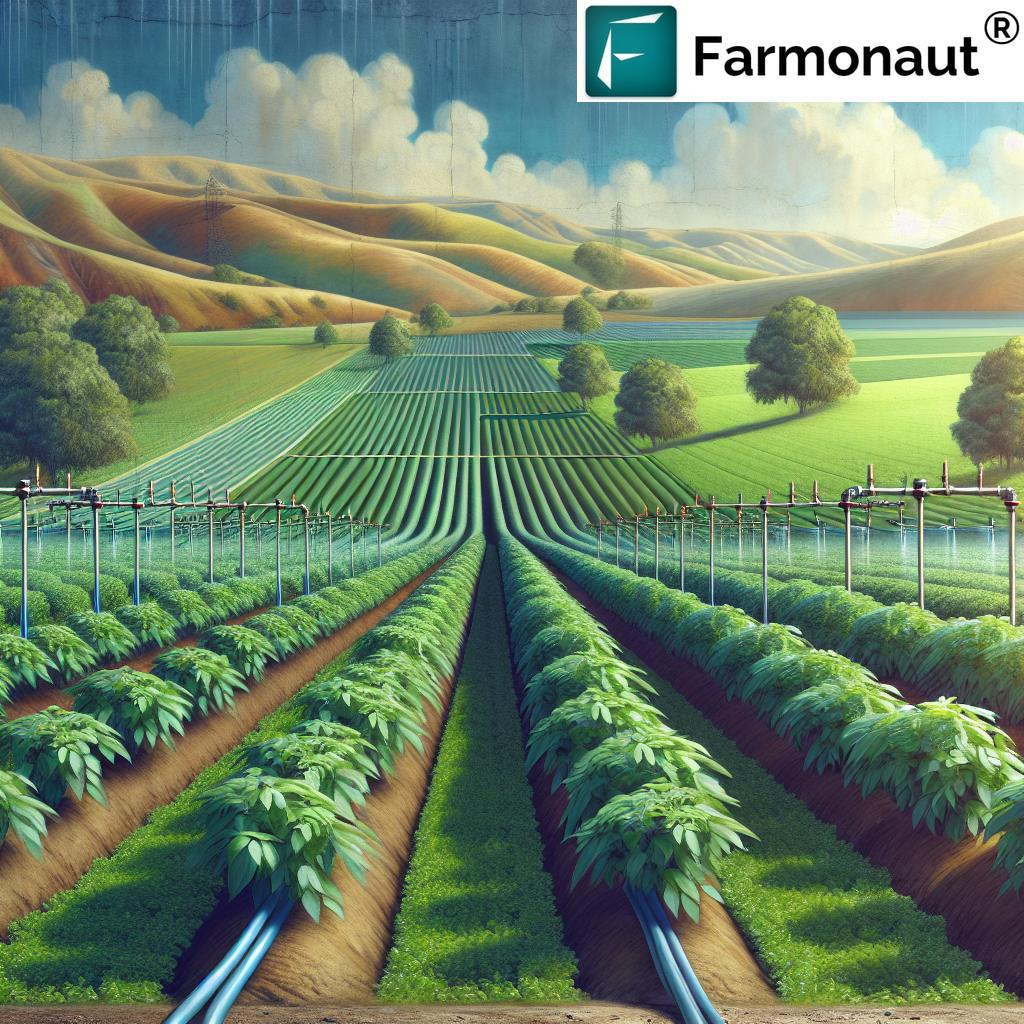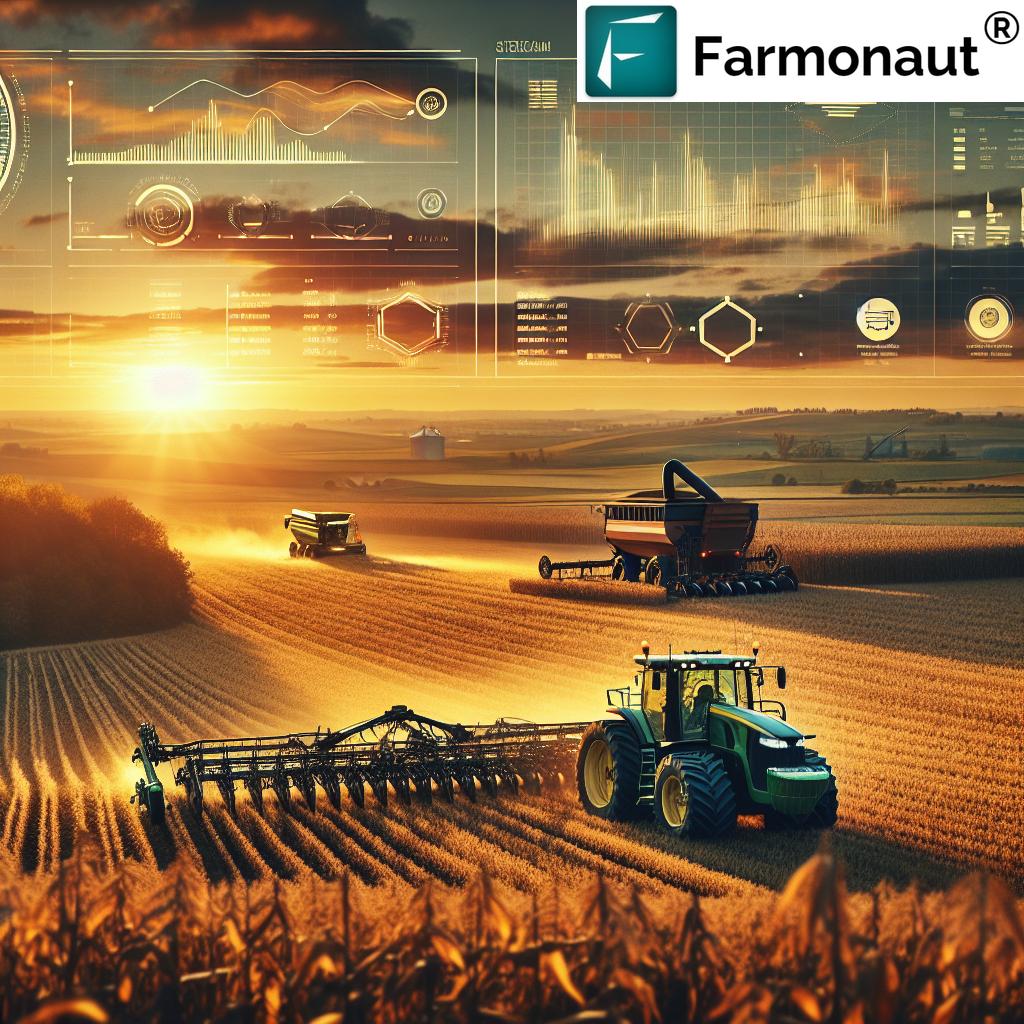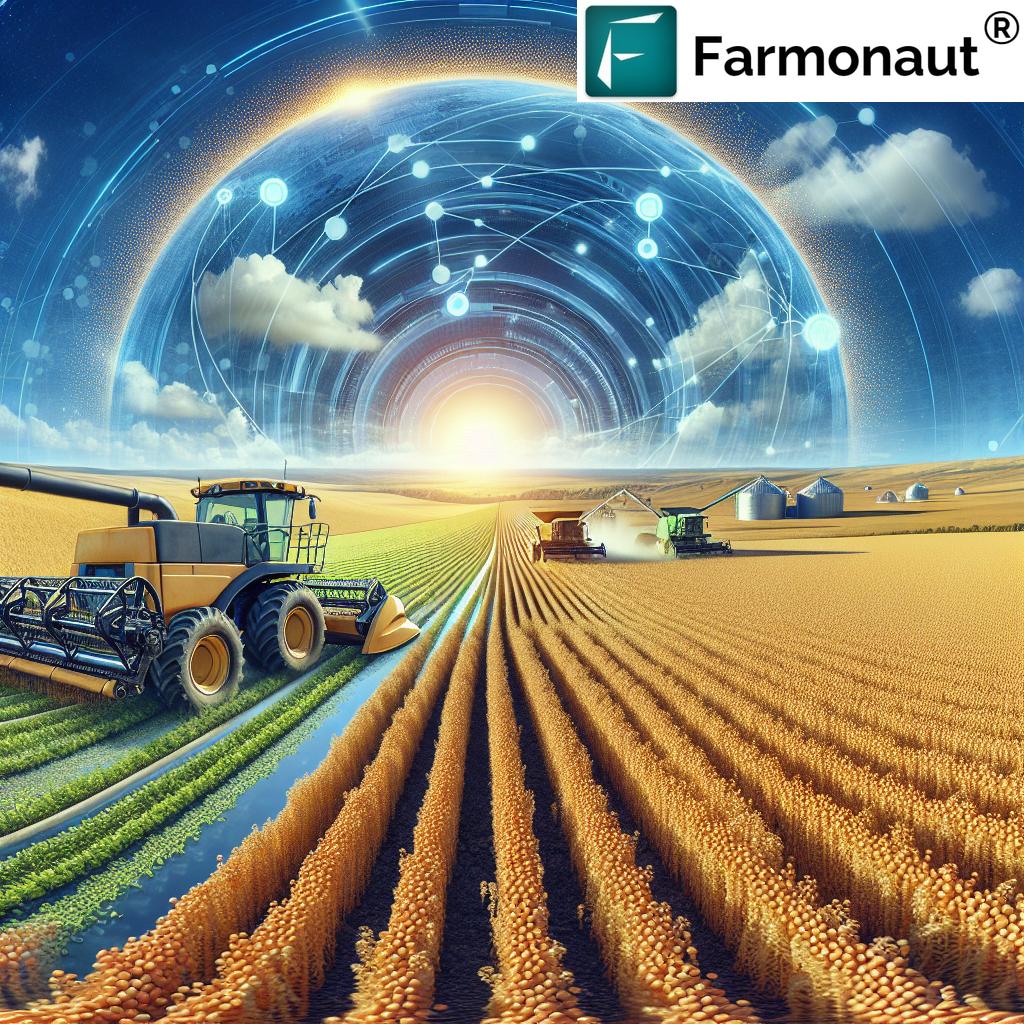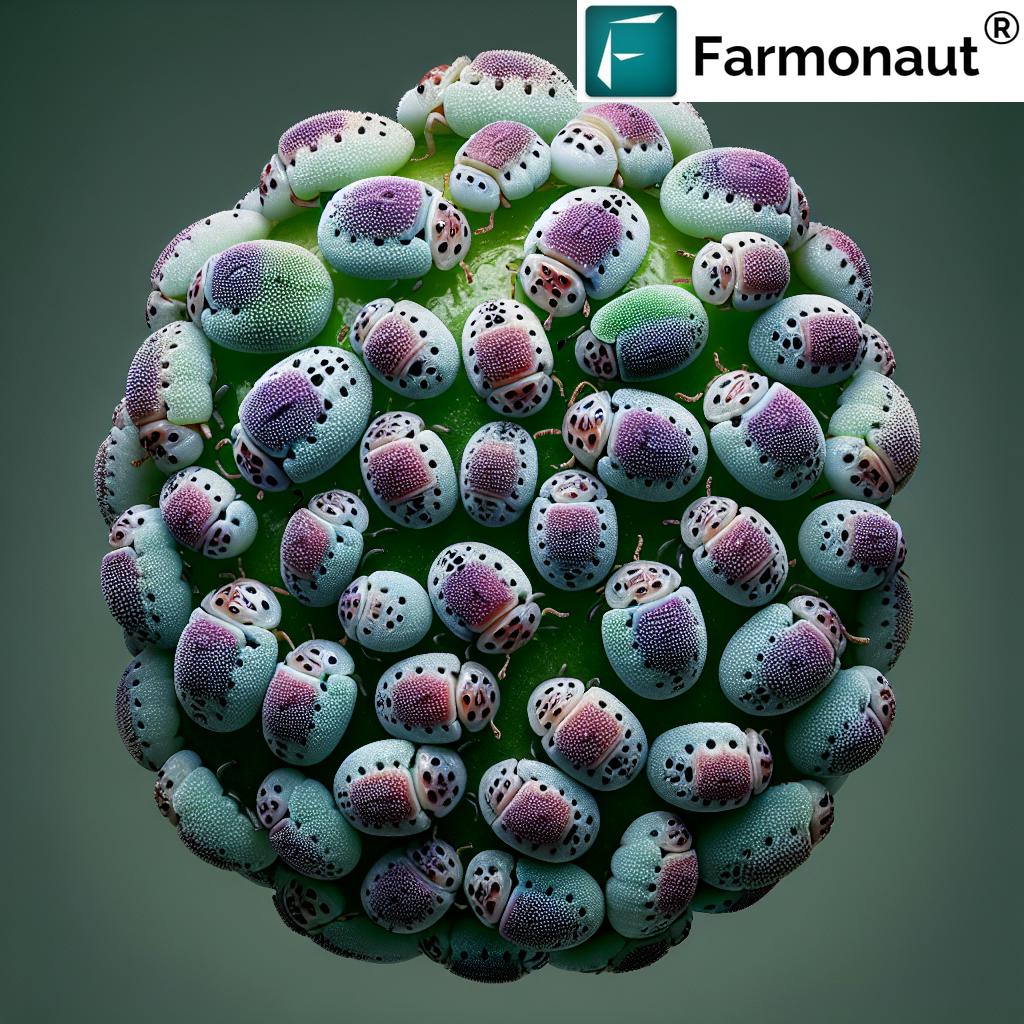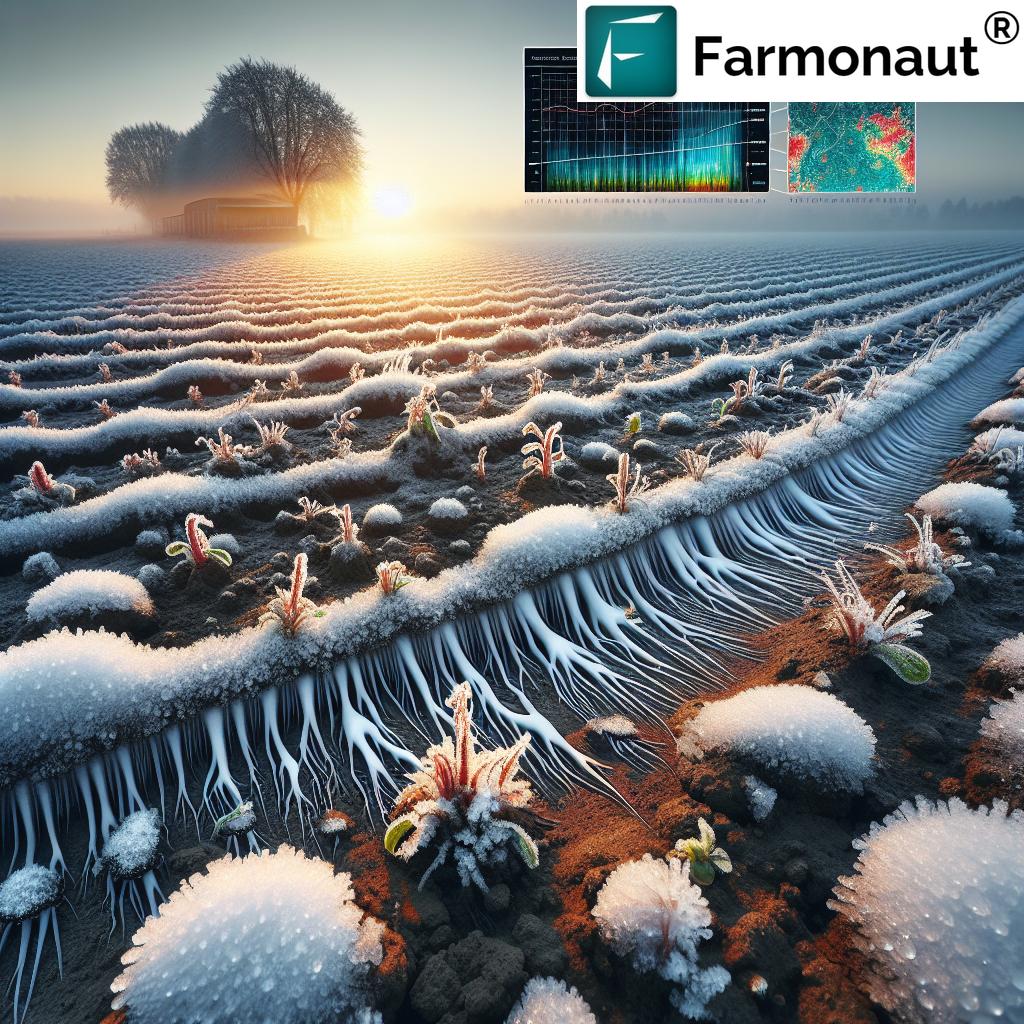Revolutionizing Agriculture: Global AgTech Trends and Investment Insights for Sustainable Farming in 2023
“AgTech investments in 2023 are increasingly focused on upstream solutions, with over 60% of funding targeting major industry challenges.”
In the ever-evolving landscape of agriculture, 2023 has emerged as a pivotal year for technological advancements and investment trends in the AgTech sector. As we delve into the intricate web of innovations reshaping our food systems, we at Farmonaut are excited to present a comprehensive analysis of the global AgTech trends and investment insights that are paving the way for sustainable farming practices.
The AgTech Revolution: A Global Perspective
The agricultural technology (AgTech) industry has witnessed unprecedented growth and transformation in recent years. From the sun-drenched fields of Australia to the tech corridors of San Francisco, and across the diverse agricultural landscapes of Asia, Africa, Europe, and the Middle East, AgTech is redefining how we approach cultivation, resource management, and food production.
In this blog post, we’ll explore the latest agtech investment trends, agricultural technology innovations, and sustainable farming solutions that are making waves across the globe. Our journey will take us through the realms of precision agriculture technologies, climate-smart agriculture, and digital farming technologies that are at the forefront of this agricultural revolution.
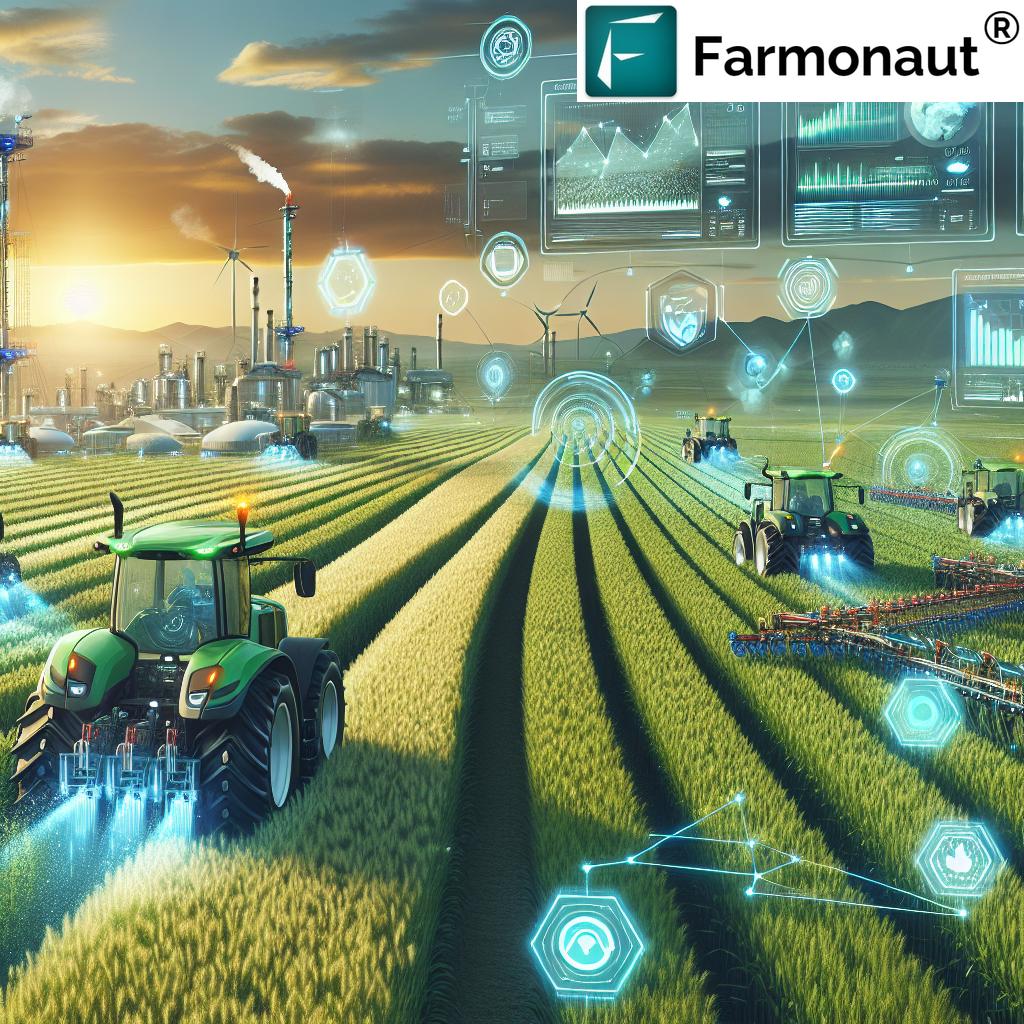
AgTech Investment Trends: A Global Overview
The AgTech sector has become a hotbed for investment, with venture capital firms, private equity, and even traditional agricultural companies pouring billions into innovative startups and technologies. Let’s break down the global investment landscape:
| Region | Investment Volume (Est. USD Billions) | Top AgTech Sectors | Key Startups/Companies | Notable Innovations |
|---|---|---|---|---|
| Asia | 5.2 | Precision Agriculture, Vertical Farming | Pinduoduo, Ninjacart | AI-driven crop disease detection |
| Africa | 1.8 | Digital Farming, Microfinancing | Hello Tractor, Apollo Agriculture | Blockchain for supply chain transparency |
| Europe | 3.5 | Climate-Smart Solutions, Robotics | Infarm, Ynsect | Autonomous farming robots |
| Middle East | 1.2 | Smart Irrigation, Desert Agriculture | Pure Harvest, WakeCap | Solar-powered desalination for irrigation |
| North America | 7.5 | Biotechnology, Farm Management Software | Indigo Ag, Plenty | CRISPR gene-editing for crop resilience |
This table illustrates the diverse focus areas and investment patterns across different regions, highlighting the global nature of AgTech innovation and the substantial capital being directed towards transforming agriculture.
Precision Agriculture Technologies: The Cornerstone of Modern Farming
Precision agriculture technologies have emerged as the cornerstone of modern farming practices, offering unprecedented levels of accuracy and efficiency in crop management. These technologies leverage data analytics, IoT devices, and advanced imaging techniques to provide farmers with granular insights into their fields.
- Satellite-Based Crop Monitoring: Companies like Farmonaut are at the forefront of this revolution, offering satellite-based farm management solutions that provide real-time crop health monitoring. Through our Android, iOS, and web applications, as well as our API, we enable farmers to access critical data on vegetation health, soil moisture, and other vital metrics.
- Smart Irrigation Systems: Precision irrigation technologies have shown remarkable results in water conservation. Our data indicates that smart irrigation systems can reduce water usage by up to 30% across global farming operations, a crucial advancement in regions facing water scarcity.
- AI-Powered Analytics: Artificial intelligence and machine learning algorithms are being employed to analyze vast amounts of agricultural data, providing actionable insights for pest management, yield prediction, and resource allocation.
“Precision agriculture technologies have shown to reduce water usage by up to 30% in smart irrigation systems across global farming operations.”
Climate-Smart Agriculture: Adapting to Environmental Challenges
As the global climate continues to change, the agricultural sector is increasingly turning to climate-smart solutions to ensure food security and sustainability. These innovative approaches focus on mitigating the impacts of climate change while adapting farming practices to new environmental realities.
- Carbon Sequestration Techniques: Advanced farming methods that enhance soil carbon storage are gaining traction. These practices not only combat climate change but also improve soil health and crop yields.
- Drought-Resistant Crop Varieties: Biotechnology and traditional breeding techniques are being combined to develop crop varieties that can thrive in water-stressed conditions, a crucial advancement for regions like Australia and parts of Africa facing recurring droughts.
- Renewable Energy Integration: The adoption of solar and wind energy in farming operations is reducing the carbon footprint of agriculture while providing cost-effective power solutions for rural areas.
At Farmonaut, we recognize the importance of climate-smart agriculture. Our platform includes features for carbon footprint tracking, enabling agribusinesses to monitor and reduce their environmental impact in real-time.
Digital Farming Technologies: The Future of Agriculture
Digital farming technologies are revolutionizing the agricultural landscape, bringing the power of data and connectivity to every aspect of farm management. From small-scale operations to large agribusinesses, these technologies are enhancing decision-making processes and operational efficiency.
- IoT Sensors and Connected Devices: The Internet of Things (IoT) has found a fertile ground in agriculture. Sensors deployed across fields collect real-time data on soil conditions, weather patterns, and crop health, feeding this information into centralized management systems.
- Blockchain for Traceability: Blockchain technology is being leveraged to create transparent and tamper-proof supply chains. This is particularly crucial for ensuring food safety and meeting the growing consumer demand for product traceability.
- Big Data and Predictive Analytics: The vast amount of data generated by digital farming tools is being harnessed through advanced analytics to predict crop yields, optimize resource allocation, and even forecast market trends.
Farmonaut’s digital farming solutions integrate seamlessly with these technologies, offering a comprehensive platform for agricultural data analytics and farm management. Our API Developer Docs provide detailed information on how to integrate our satellite and weather data into existing systems, further enhancing the digital capabilities of farms worldwide.

AgTech Startup Funding: Trends and Opportunities
The AgTech startup ecosystem is thriving, with investors recognizing the potential for significant returns in this sector. Several key trends have emerged in AgTech startup funding:
- Focus on Upstream Solutions: There’s a notable shift towards funding startups that address major industry challenges at the source. This includes innovations in seed technology, soil health management, and sustainable input development.
- Cross-Industry Collaborations: AgTech startups are increasingly partnering with players from other sectors such as biotech, robotics, and data analytics to create more comprehensive and innovative solutions.
- Sustainability-Driven Investments: Investors are showing a strong preference for startups that prioritize environmental sustainability alongside profitability, reflecting a broader shift towards ESG (Environmental, Social, and Governance) considerations in investment decisions.
For startups in the AgTech space, this environment presents both challenges and opportunities. While competition for funding is fierce, there’s also an unprecedented level of support for innovative ideas that can transform agriculture.
Remote Sensing and GIS in Agriculture: A Technological Leap
The integration of remote sensing and Geographic Information Systems (GIS) in agriculture represents a significant technological leap in farm management and decision-making processes. These technologies provide farmers and agribusinesses with unprecedented insights into their operations, enabling more precise and efficient farming practices.
- Satellite Imagery Analysis: Advanced satellite imagery combined with spectral analysis allows for detailed monitoring of crop health, pest infestations, and soil conditions across vast areas. This technology forms the core of Farmonaut’s offerings, providing our users with up-to-date information on their fields.
- Drone-Based Mapping: Unmanned Aerial Vehicles (UAVs) equipped with high-resolution cameras and multispectral sensors are being used for detailed field mapping, crop scouting, and even targeted pesticide application.
- GIS for Resource Management: GIS technology enables farmers to create detailed maps of their land, overlaying various data points such as soil type, moisture levels, and crop yield history. This comprehensive view supports better resource allocation and long-term planning.
At Farmonaut, we leverage these technologies to provide our users with comprehensive crop monitoring solutions. Our platform integrates satellite data with AI algorithms to deliver actionable insights directly to farmers’ devices, whether through our  or
or  .
.
Sustainable Farming Solutions: Balancing Productivity and Environmental Stewardship
The push towards sustainable farming solutions is reshaping agricultural practices worldwide. These innovations aim to balance the need for increased food production with environmental conservation and resource efficiency.
- Regenerative Agriculture: This approach focuses on restoring soil health, enhancing biodiversity, and improving water cycles. Techniques such as no-till farming, cover cropping, and rotational grazing are gaining popularity for their ability to boost yields while sequestering carbon.
- Vertical Farming: Urban areas are seeing a rise in vertical farming operations, which utilize hydroponic or aeroponic systems to grow crops in stacked layers. These systems can significantly reduce water usage and eliminate the need for pesticides while bringing food production closer to consumers.
- Precision Pest Management: Advanced imaging and AI technologies are enabling targeted pest control measures, reducing the overall use of pesticides and minimizing environmental impact.
Farmonaut’s platform supports these sustainable farming initiatives by providing farmers with the data and insights needed to implement more environmentally friendly practices without compromising on productivity.
The Role of AI in Agricultural Data Analytics
Artificial Intelligence (AI) is playing an increasingly crucial role in agricultural data analytics, transforming how we interpret and act upon the vast amounts of data generated in modern farming operations.
- Predictive Analytics: AI algorithms can analyze historical data alongside real-time inputs to predict crop yields, disease outbreaks, and optimal harvest times with remarkable accuracy.
- Automated Decision Support: AI-powered systems can provide farmers with automated recommendations for irrigation, fertilization, and pest control, tailored to specific crop needs and environmental conditions.
- Image Recognition for Crop Health: Machine learning models trained on vast datasets of plant images can quickly identify signs of disease or nutrient deficiencies from photos taken in the field.
Farmonaut’s Jeevn AI Advisory System exemplifies the power of AI in agriculture. By analyzing satellite data and various other inputs, it provides personalized, real-time advice to farmers, helping them make informed decisions that optimize their operations.
Global Initiatives Driving AgTech Innovation
Around the world, various initiatives and events are driving AgTech innovation and fostering collaboration between stakeholders:
- AgTech Accelerators: Cities like San Francisco and Tel Aviv are home to numerous accelerator programs specifically focused on AgTech startups, providing funding, mentorship, and networking opportunities.
- Government-Backed Research Programs: Countries like Australia and the Netherlands are investing heavily in agricultural research, with a focus on developing drought-resistant crops and sustainable farming techniques.
- Cross-Border Collaborations: International partnerships are forming to address global challenges in food security and sustainable agriculture, bringing together expertise from diverse regions.
These initiatives are crucial in driving the AgTech sector forward, creating an ecosystem where innovations can flourish and be rapidly adopted across different agricultural contexts.
Challenges and Opportunities in AgTech
While the AgTech sector is brimming with potential, it also faces several challenges that present opportunities for innovation:
- Data Privacy and Security: As farming becomes increasingly data-driven, ensuring the security and privacy of sensitive agricultural data is paramount.
- Technology Adoption: There’s a need for education and support to help farmers, especially in developing regions, adopt and effectively use new technologies.
- Interoperability: As the number of AgTech solutions grows, ensuring different systems can work together seamlessly becomes crucial for maximizing their benefits.
These challenges represent opportunities for AgTech companies to develop more robust, user-friendly, and integrated solutions. At Farmonaut, we’re continually working to address these issues, ensuring our platform is secure, accessible, and compatible with a wide range of farming systems.
The Future of AgTech: Emerging Trends to Watch
As we look towards the future of AgTech, several emerging trends are poised to shape the industry:
- 5G and Edge Computing: The rollout of 5G networks and advancements in edge computing will enable real-time data processing and decision-making on farms, even in remote areas.
- Autonomous Farming Equipment: Self-driving tractors and harvesting robots are set to become more common, reducing labor costs and increasing efficiency.
- Gene Editing for Crop Improvement: CRISPR and other gene-editing technologies are opening new possibilities for developing crops with enhanced nutritional profiles and resistance to pests and diseases.
These trends underscore the rapid pace of innovation in the AgTech sector and the ongoing transformation of agricultural practices worldwide.
Conclusion: The Path Forward for Sustainable Agriculture
The AgTech revolution is well underway, reshaping the agricultural landscape with innovative technologies and sustainable practices. From precision agriculture and AI-driven analytics to climate-smart solutions and sustainable farming techniques, the sector is witnessing unprecedented growth and transformation.
As we navigate this exciting era of agricultural innovation, platforms like Farmonaut play a crucial role in making advanced technologies accessible to farmers worldwide. By providing affordable and user-friendly solutions for satellite-based crop monitoring, AI advisory systems, and resource management tools, we’re contributing to a more sustainable and productive future for agriculture.
The path forward for sustainable agriculture lies in the continued development and adoption of these technologies, coupled with a commitment to environmental stewardship and global collaboration. As we face the challenges of feeding a growing population in a changing climate, the innovations emerging from the AgTech sector offer hope for a more resilient and sustainable food system.
To explore how Farmonaut can support your farming operations with cutting-edge AgTech solutions, visit our  or download our mobile apps for Android and iOS.
or download our mobile apps for Android and iOS.
FAQs
- What is AgTech?
AgTech, short for Agricultural Technology, refers to the use of technology in agriculture, horticulture, and aquaculture with the aim of improving yield, efficiency, and profitability. - How is AI being used in agriculture?
AI is being used in various ways, including crop and soil monitoring, predictive analytics for weather and yield, automated irrigation systems, and pest detection. - What are the benefits of precision agriculture?
Precision agriculture offers benefits such as increased crop yields, reduced waste of water and fertilizers, lower environmental impact, and improved farm profitability. - How does satellite imagery help farmers?
Satellite imagery provides farmers with valuable data on crop health, soil conditions, and weather patterns, enabling them to make informed decisions about irrigation, fertilization, and pest control. - What is climate-smart agriculture?
Climate-smart agriculture is an approach that helps guide actions to transform agricultural systems to effectively support development and ensure food security in a changing climate.


